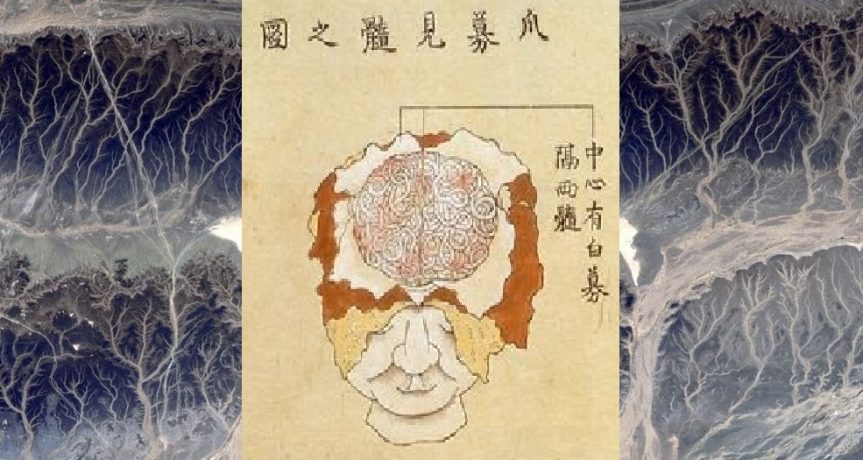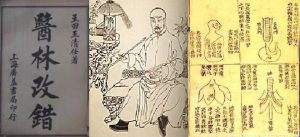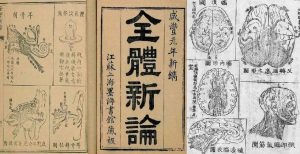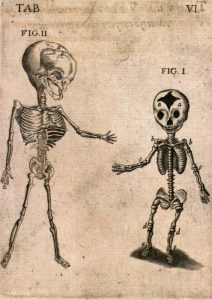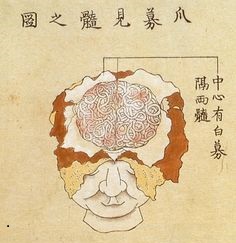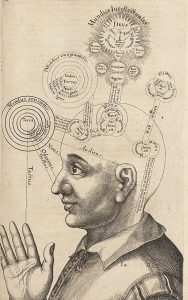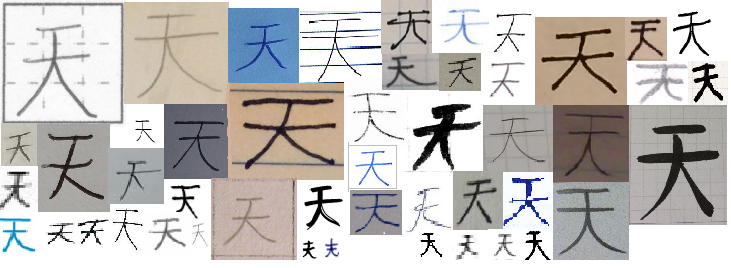Terminology in Chinese Medicine: A Critique of the WHO term list
N. Herman Oving, translator of Chinese medical literature
Abstract
This paper shows severe flaws in the terminology as proposed by the document WHO International Standard Terminologies on Traditional Medicine in the Western Pacific Region. After an overview of general principles applied in terminology, the methodology behind the WHO list is discussed, illustrated by an analysis of several terms and definitions.
What is terminology?
Most of us are familiar with the term “terminology” in the meaning of “a set of special words belonging to a science, an art, an author, or a social entity.” The second meaning of “terminology,” relevant for the discussion and evaluation of term lists, is “the language discipline dedicated to the scientific study of the concepts and terms used in specialized languages (languages for special purposes – LSP’s).”
Terminology describes terms (terminological units) used in LSP’s, while lexicology describes words in language for general purposes (LGP). A dictionary is designed to describe a language in all its variety of expressions, whereas terminological systems are used in education, scientific research, translation, and on the work floor (in our case, in the clinic).
The main concern of a terminologist is to identify clearly defined meanings of terms. Although terms with multiple meanings (polysemy) exist in LSP’s, they target the ideal of monosemy, that is, each term designating only one concept. To reach that goal, conceptual systems are created, based on the knowledge of, and literature created by subject-field specialists. In the process of creating terminologies and choosing terms in a second language, the first step is always to define the concept of the original term. In lexicography, context is often of major importance in describing usages of words, whereas in terminography, it certainly is not (although context may provide additional information to complete a definition of a concept, and for translators, it is useful if terminologies contain examples of usage).
LSP’s are subject to evolving conventions and change. In the course of time, definitions of concepts may change, for instance by new discoveries, or by different social circumstances. Terminologists carefully take this into account. Systematic comparisons of terms already in use can be important in the process of creating conceptual systems.
Translators mostly do not have time to systematically and coherently investigate all the terms they encounter in their translation of LSP texts (or discourse). If no reliable term list is available, or if a certain term is not included in such a list, translators will (indeed, have to) come up with a term themselves, and -hopefully for the readers- use that chosen term consistently. In scientific discourse, it is generally obligatory to include such terms in an index, glossary, etc. Translators should ideally consult specialists in the process of selecting a ‘new’ term.
Basic principles of terminology
A terminology created for the purpose of discourse in a certain knowledge field should adhere to the following principles:
- It should be based on a system of clearly, intelligibly, and transparently defined concepts.
- New terms (in our case, terms in the target language) should be well-motivated, logical, (preferably) self-explanatory, systematic, productive of derivation, not contain superfluous elements, and preferably not have synonymous, homonymous nor polysemous terms.
- Ideally, the system should be flexible and open-ended, to accommodate the inclusion of terms at a later stage.
- Polysemous terms in the source language have to be clearly indicated: if a term has multiple meanings, it should also have multiple definitions. In the target language, polysemous terms should be avoided by the formation of different terms for the different meanings of a term in the source language.
- Synonymous terms in the source language should be listed, but (ideally) the use of synonyms should be avoided in the formation of new terms.
- All terms used in definitions should also appear as separate entries.
- Circularity should be avoided. Circularity occurs when the term or part of the term being defined is used in the definition. It also occurs when a synonym of the term is used to define the term.
In general, creators of term lists should always bear in mind that the terms and definitions will be received and used by students, translators (who cannot be expected to be specialists in all the technical subsets of a terminology) and, possibly, other lay persons. If concepts are not systematically defined, educational material cannot be built upon the terminology as presented, and nobody will be able to trust information contained in the specialized literature of the field.
As we will see below, the WHO committee seems to not have paid much attention to the end users of their list in this most important respect.
While discussion of single terms can often broaden our understanding of concepts used in our field, evaluation of terminologies like that which has recently been presented by the WHO can only be thorough if we look at them from the viewpoint of terminology (in its scientific meaning). I hope that this brief introduction will serve as context for the following review.
(I have drawn on The Pavel Terminology Tutorial -web publication- and Terminology: An Introduction by Picht and Daskau)
Brief review of the WHO term list
I am aware of the fact that this presentation of my findings is not a systematic analysis. However, I hope it is sufficiently illustrative, and may serve for further discussion.
About the Introduction
In the introduction to the WHO term list, the committee’s objective is stated: (for the sake of clarity, I have italicised the quotations from the WHO document)
- “Provide a common nomenclature for better understanding, education, training, practice and research in TRM” (TRM = Traditional Medicine – in the Western Pacific Region). The target audience, the authors say, consists of “researchers, educators, practitioners, regulators and students in the field of TRM” adding: It will thus assist in raising standards within TRM and, also, be of use to those who are not familiar with TRM, such as Western medical practitioners.
After stating that there is ‘an urgent need for unification and standardization‘ because of confusion amongst readers caused by the various English words available as equivalents for single terms or single characters, the introduction further informs us about the methods that were followed:
[…] this abundance (the abundance of English terminology – HO) also provides a rich source for selecting the most appropriate English terms to be used as the standard.
If I understand this correctly, users of the list (people who read or create English texts on Chinese medicine) may expect to find many terms that are already in use, and (more or less) accepted by the field. Or at least, that the terms selected by the WHO to become standard terms, are drawn from representative existing literature.
- On the Chinese Herbal Academy (CHA) email-exchange-list, some people have already mentioned a few terms that were rather surprising to them, ‘’energizer” for jiao1 (as in san1jiao1, shang4jiao1 etc.) being such an example. There are some other terms on the WHO list that do not seem to be well chosen in this respect:
For the term 气机 qi4 ji1 ‘qi movement’ is selected. I personally know of no English sources that use that term; I think the terms (most) commonly used in English literature are ‘qi dynamic’ or ‘qi mechanism.’ Other examples include ‘ideation’ for yi4 意 , ‘innate’ for xian1tian1 先天, ‘meridian.’
We might categorize these kind of terms as ‘unlucky choices.’ I agree with others who think it doubtful that they will be adopted for use by Western English language publications / schools. Since there are already several term lists in use, it is likely that the WHO list will only be used by publishers in the Western Pacific Region.
I would like to note here, that for future cross-referencing, Eric Brand has prepared a comparative list of several term collections (those of Xie Zhufan, Wiseman/Feng, the Eastland glossary, and WHO). Of course, the corpus of literature is wider than that. There are other glossaries out there, notably in the work of Unschuld. (By comparison, the Maciocia books include only very small glossaries.) Overall, the WHO committee seems to have paid little attention to contributions of Western experts in the field.
- Although the classical conceptual foundations of the ancient foundation texts still appeal to those seeking an alternative to Western modes of thinking, increasing numbers of people seek direct access to the conceptual content and clinical applications of TRM, primarily through studying contemporary publications. In view of the purposes of this document, which are for present day education, training, practice and research, and for information exchange, the technical terms were chiefly selected from recent publications.
This may be quite disappointing for the many people in our field who are studying and translating classical literature. I think, and others have stated that elsewhere, that it is a reflection of the role of politics in the WHO committee: apparently, a majority of the members consider contemporary texts, which predominantly reflect the recent trend of scientification/ biomedicalization in CM, as the basic source for the development of terminology. Contemporary Chinese medical discourse is still full of literary language derived from classical sources which the WHO document acknowledges a bit further down in the introduction: […] there are many classical works using different terminology in Chinese, which are still of practical significance. However, this appears little more than a platitude when considered in terms of the body of the document as a whole.
The phrase that follows is problematic:
When translating these terms, particularly from a literal approach, each alternative name should have its rendering, and as a result, one single concept may have several expressions in English. In fact, this diversity in English equivalents is of no technical significance.
No technical significance? From the viewpoint of terminology, this most certainly has wide implications. It causes problems for consistent use of terms and it causes many problems for implementation in computerized databases, etc.. What the committee actually proposes here, is that synonyms used in the source language can, or may, be rendered in the English terminology. That is ok of course, but actually such synonyms should be listed and marked in term lists, and thus linked to definitions of concepts if only for the sake of cross-referencing. If we just assume that the diversity of terms used for one concept in CM literature should or could be rendered in a diversity of English terms as well, without listing such terms, how will readers know that these different words refer to the same concept? Lists of such synonyms should be created for this aspect of CM terminology. If we want to understand all the terms ever used in CM, there is still much work to be done!
What must a translator do when encountering (more or less rare) synonyms if they are not included in a term list? He or she can do two things: use another English word, but then an annotation is required (a note which says: this term is synonymous to ….); or use the term that is listed in the standardized terminology right away. However, the translator must be able to identify the concept, and make sure the synonymy is 100% accurate.
- Because of the evolution of TRM, the original concepts of some traditional medical terms have been changed or only one of the multiple concepts has been adopted at present. In this case, the English expression of the contemporary concept should be regarded as the standard.
What English expression of what contemporary concept? Is there anyone who understands this? I would love to see examples… Is there really a solution offered here for this -comprehensive- problem? Or is my confusion due to the fact that the underlying idea is that we are only talking about contemporary texts? In that case, what should we do with all these quotations from the classics?
- The number of commonly used terms in TRM is estimated to be more than 4000, most of which are included in this document.
4000 is a good start, but the term list will probably have to include more like ten times as many terms. There is nothing shocking about that; most knowledge fields have enormous term lists, and CM is an enormous field. How many terms are there in WM? I once did a study of terms involved in cell division as a project for my terminology studies. I had to stop (there was a time limit) after concluding: in science, if you focus on a seemingly very small subject, the literature, and consequently the terminology, grows and grows and grows. This will happen with CM as well, as more and more books are translated. People might say: Ah, but there are a lot of alternative terms (synonyms) used, but then still, the synonyms must be acknowledged and verified by peers etc. There are no translators who can build up knowledge of all the terms ever used; it is team work, and the teams should not be too small (!) and consist of terminologists/linguists and subject-field experts (preferably people who are proficient in both languages). The question is not: How many terms are there to learn to be able to translate a text?, the question is: How do we create a conceptual system in which all the terms have there proper place?
- To expedite the process of term selection, the Zhongyiyao Changyong Mingci Shuyu Yingyi: English Translation of Common Terms in Traditional Chinese Medicine: Xie Zhufan, China TCM Pub. Co., Beijing, 2004) was adopted by voting through the main reference for the development of the international standard terminology.
Since the creation of terminology in our field is in a developing stage, it is a pity no other sources have served for this purpose. I have copied this statement, because the introduction is not very clear about what criteria were used to designate a term as ‘commonly used.’
- We are informed that the committee voted on each term individually, to decide which English term would be selected. I have understood that many (or at least some – I don’t know the exact statistics) of the people who voted, either had little knowledge of Chinese medicine or were not linguistically schooled, not to speak of the many members who did not have sufficient proficiency in English. From the names in the annexes two things are conspicuous: representatives from China, Korea, and Japan always formed an overwhelming majority and native speakers of English were enormously under-represented.
If term choices are made by voting term by term, it is rather predictable that no systematic/ coherent list can be created. It is clear that the WHO list is a mixture of different approaches, and if viewed from the perspective of a terminologist, it all the more looks like a hotchpotch of terms from different origins, with a strong emphasis on trying to get in as many Western medical terms as possible. It therefore, unfortunately, cannot be seen as a term list based on sound terminological principles.
Use of Western medical (WM) terms
Since both traditional and modern medicines aim at maintaining health and treating diseases, there must be some overlap between the two systems of medicine in concept and hence in terminology. On such occasions, the only difference exists in wording. When a traditional term in Han character has a corresponding Western medical term expressing the same concept, use of that Western medical term is not only reasonable but also necessary. Otherwise, creation of a new English term from the original term in Han character would cause confusion. On the other hand, improper use of Western medical terms is misleading and therefore is excluded from this document.
It would have been helpful to know what exactly is meant here by ‘improper use.’ I don’t suppose ‘hematochezia’ (the term listed for 便血 bian4 xue4) is considered more proper then ‘bloody stool’ or ‘hemafecia,’ so I think we should understand this phrase to mean that WM terms ought not be used when the definition of the CM term suggests there is a difference with the WM term. So, why then are there so many terms included that are taken directly from WM without being accompanied by definitions that confirm they are representing the same concept?
There are a several things we can say about this. Firstly, the use of WM terms for Chinese medical concepts is questionable in many instances because the concepts do not fit seamlessly (we cannot be sure there is a one-to-one relationship). The introduction of so many WM terms looks suspiciously as though it were mostly inspired by the wish to let WM experts believe that CM recognizes disease patterns that correlate to the conditions defined by WM. Of course, it is useful to know when a certain WM disease resembles a certain CM disease etc., but WM terms serve better as additions to the definitions, especially when it is clear (from those definitions!), that there is a conceptual difference in, at least, understanding the disease.
Secondly, a few more important terminological principles are neglected, for instance the desirability of clarity for the users. The designers of the list ignore the fact that a large part of the audience are not trained in Western medicine and give us the strong impression that we all should embrace the integrative approach. Furthermore, there is a considerable group of Chinese medical terms describing diseases that, if translated literally, are self-explanatory to some degree. This means that they contain information relevant to the outward expression or the pathomechanism involved, and thus may tell us directly how CM conceived of them. An audience sincerely interested in learning Chinese medicine would be much better served if such valuable information were preserved. In short, for an accurate transmission of Chinese medical knowledge, it can hardly be argued that the use of WM terms is the preferred option.
To illustrate this,
Let us look at the term 風牽偏視 [feng1 qian1 pian1 shi4]. The WHO term is paralytic strabismus, and the definition reads: sudden onset of squint with impaired movement of the eye and double vision attributed to an attack of wind. Now, paralytic strabismus is a WM term, but the definition in WM certainly does not include wind as cause. The composition of the Chinese term suggests, however, that wind is the cause of the condition, and that information is lost when we use the WM term in translation. If we use ‘wind-induced squint’ (the term proposed by Wiseman) and add to the definition that this condition is known in WM as paralytic strabismus, we kill three birds with one stone: we have a term that is understood by many more people; the term tells us something about how CM theory understands this condition, and we have a reference to the correlative term in WM. I think this approach is much better, (and it is followed consistently throughout Wiseman and Feng’s proposed terminology). It has the extra advantage of leaving translators the option to choose the WM term (provided that there is a one-to-one correlation of course), or use it in a note. I mean, for translation of contemporary journal articles directed to an audience of WM trained professionals, there is no objection per se to the use of the WM term (again, one should be sure about the correlation).
However, if we want to create source-oriented translations of pre-modern CM medical literature, why would we want to loose the ‘wind-induced’ part of the term and replace it with ‘paralytic?’ In my opinion, using such WM terms in our translations could be categorized as ‘improper use.’
Especially for the translation of classical texts it is not desirable to use WM terms, as the majority of these terms have been created at a much later date in history and are part of a different conceptual system. Other writers have directed our attention to this problem; the Paradigm site is actually full of materials in which this and other problems with CM terminology are described. I wished to repeat it here, since the WHO list does not provide translators with the means to preserve original ideas contained in the terms. To speak for myself, as a translator, I do simply not wish to use instruments that are designed to divert the attention away from the source concepts. Terminologies should not be used for the purpose of changing descriptions of knowledge and the perception of concepts, but solely to describe them.
On the CHA list, the term used for 食厥 [shi2 jue2], namely ‘crapulent syncope’ (translated by Wiseman and Feng as ‘food reversal’) has been discussed; the drift being that it is not going to be used.
I think that this is exactly what will happen with many other terms in the list: simply, people will not use them.
As for concepts known to both Western and Chinese medicine, there are some striking anomalies in the WHO list. The committee proposes the use of ‘water wheel, blood wheel, flesh wheel’ (etc.) for terms that are identified in the definitions as ‘the pupil, the canthus, the eyelids.’ It leaves us to wonder why the committee here prefers to use the literal translations.
Terminological confusion: Boils, furuncles, pustules, snake-heads, and clove sores
In the subset of disease conditions for which the WHO committee could not find a Western equivalent, there are yet other problematic issues. I have deliberately chosen to investigate some terms and definitions in a field that I am not particularly familiar with (namely, external medicine), in an attempt to objectively illustrate specific problems translators may encounter when using this list. Since it is cumbersome to always indicate where the committee offends what principle applied in terminology, I refer readers to the first section of this paper. Some examples that directly relate to those principles are provided in the last section of this paper.
- The WHO committee has chosen the term ‘deep-rooted boil’ to represent the term 疔 ding1. They define it as ‘a boil with its central core deeply rooted.’ The character 疔 appears in several other terms:
耳疔 er3 ding1 – ear boil is defined as: ‘boil of the external auditory meatus’ – an example of circularity, as ‘boil’ is a separate term in the list (and because 疔 ding1, as a separate term, is ‘deep-rooted boil,’ I don’t think we can assume it is a synonym of ‘boil’). The word ‘boil’ is not defined as a separate term, but is presented as synonym in the definition of ‘furuncle’ – which is the term used for the Chinese 癤 jie1, and defined as: ‘an acute localized inflammation of the skin, having a hard central core, and forming pus, also known as boil.’
The character 癤 jie1 (as separate term ‘furuncle’), appears in the WHO list in:
螻蛄癤 [lou2 gu1 jie1] mole cricket boil (adopted from Wiseman)
消癰散癤 [xiao1 yong1 san4 jie1] disperse abscesses and boils
Questions arise:
Does it make sense that an ‘international standardized terminology’ retains boil and furuncle as synonyms, and also uses them for two differently defined Chinese terms?
Why doesn’t the list clarify whether there is a difference or not between ‘boil’ and ‘deep-rooted boil?’
The confusion becomes worse when we look at other terms in which the character 疔 ding1 appears:
鼻疔 bi2 ding1 is nasal boil – ‘a boil occurring at ….’ in definition;
舌疔 she2 ding1 tongue boil – ‘a pustule on the tongue’ is part of the definition;
脣疔 chun2 ding1 is lip pustule and ‘furuncle on the lip […] with pustule formation’ is part of the definition.
(To add to the confusion, pustule is the term used in the list for the Chinese 膿皰 (pus-blister), which is defined as “small circumscribed elevation of the skin, containing pus.”)
- Where does this bring the teacher and the student?
For any person trying to gain a better understanding of these skin conditions and their manifestations, this is simply confusing. For my part, after several hours of investigation, my head was spinning.
If boil is furuncle, and furuncle is pustule, we have to conclude that 癤 jie1 = 疔 ding1 …, but we cannot, because the definitions are different ….
A terminologist would simply conclude: These terms are not logical and not systematic, and the conceptual relations are not reflected in the definitions.
If certain terms, according to the list, are synonyms, why do the definitions differ, and why does the committee suggest that we use different synonyms in different terms?
If the terms are not synonymous, why are the users of the list left with the problem of sorting it all out? How could it ever be sorted out in this way?
This is a curious term, since it is a mixture of CM (snake-head) and WM (whitlow).
The term suggests that it is a special form of whitlow. Is this true? The definition says: ‘a swollen fingertip resembling the head of snake, referring to digital pyogenic inflammation.’
Merriam Webster gives for whitlow: ‘a deep usually suppurative inflammation of the finger or toe especially near the end or around the nail.’
What, exactly, is the WHO’s motivation to use the Western medical term ‘whitlow’ in this term? And what, exactly, is the difference between the WM whitlow and CM snake-head whitlow?
Looking at all these confusing examples above, how can we take the WHO committee seriously when they present this as ‘international standard terminology?’
And what about ‘clove sore’ ?
In Wiseman & Feng’s Practional Dictionary of Chinese Medicine, we find 疔 ding1 as the first component of the term 疔疮 ding1 chuang1, which is translated as ‘clove sore.’ The definition says: ‘A small, hard sore with a deep root like a clove or nail, appearing most commonly on the face and ends of the fingers.’ At the end of the entry, we learn that the character 疔 ding1 is composed of a part signifying disease and a part meaning nail or clove. All other terms in which the character appears are translated consistently, and when there is correlation with a biomedically defined disease, the entry notes it. Several of the WHO terms with 疔 ding1 quoted above are not listed in the Practical Dictionary (they are, however, listed in Wiseman’s database). Two other terms with 疔 ding1, notably ‘red-thread clove sore’ and ‘clove sore running yellow,’ are, the last with the note that it correlates with WM septicemia. In the database (used by translators), there are 40 terms of different types of clove sore. For example, besides clove sore that looks like the head of a snake, snake’s-head clove sore, we also find: snake’s-back clove sore, snake’s-belly clove sore, snake’s-eye clove sore. Some terms with 疔 ding1 indicate the appearance, others the location. I mention all this, because if translators use the WHO list they would not have a clue how to translate unlisted terms with 疔 ding1 (should they use boil, pustule, or whitlow?). Wiseman and Feng’s approach is to make the system open-ended, meaning that it allows for new terms to be incorporated in a systematic and transparent way, without neglecting the Western medical correlation when available.
More problems with definitions and term choices in the WHO list
Lack of system in definitions
There is a severe lack of systematization in definitions of the WHO list. Some examples have already been mentioned above. To illustrate that this problem does not only occur in a few definitions, but is rampant throughout the list, I have listed some further examples:
- ‘Abscess’ is the term selected for 癰 yong1. It is defined as: ‘A pyogenic infection with localized collection of pus buried in tissues or organs.’ The definitions of the various types of abscess included in the list show us that the WHO failed to apply a sound methodology. An ‘axillary abscess’ is defined as: ‘a pyogenic infection with abscess formation in the axillary region;’ an ‘gluteal abscess’ is defined as: ‘a pyogenic infection with abscess formation in the gluteal region’ and so forth. In a well-designed terminology, these definitions should be: ‘abscess in X, Y region’ (since ‘abscess’ is already defined). Furthermore, the character 疽 ju1 is often translated as ‘abscess’ as well, but the list fails to give us a definition of the separate term, nor does is indicate that 疽 ju1 is a synonym of 癰 yong1. It might be of interest to note that both characters appear in terms that are translated into biomedically defined diseases, such as in 乳癰 [ru3 yong1] ‘acute mastitis,’ which is defined as: ‘acute pyogenic inflammation of the breast.’ In short, if we compare all these definitions, we can only conclude that they give rise to confusion.
- The term selected for zheng4 qi4 正气 is ‘healthy qi’ which, according to the definition is ‘… the same as normal/ genuine qi’. The definition of ‘genuine qi’ (the selected term for zhen1 qi4 真气) says: ‘… also known as true qi.’
If we take this at face value, zheng4 qi4 and zhen1 qi4 are synonyms; the WHO proposes the standard ‘healthy qi’ for the first and ‘genuine qi’ for the second; the WHO adds that the synonyms for zheng4 qi4 are normal qi and genuine qi, and the synonym for genuine qi is true qi.
How can the WHO committee expect users of the list to make sense of this? After a cursory look at the definitions, any terminologist, but also many educators who have to deal with this in class, will immediately scream and shout ‘They are different!’.
- The two terms yuan2 qi4 原气 and yuan2 qi4 元气 (different characters yuan2) are translated with one term, ‘source qi’ and the definition says: ‘… the same as original/ primordial qi.’ Is this helpful? I’m not so sure. How is this motivated? What is primordial qi, and has it really been used in English literature to translate the two terms yuan2 qi4 in question? I think that is unlikely, and suppose it has been used as translation for 先天之气 xian1 tian1 zhi1 qi4, ‘qi4 of earlier heaven’ (‘innate qi’ in WHO terms). I may be wrong regarding this detail, but I guess anyone can see that this all is very confusing.
Note that the phrases ‘the same as’ and ‘also known as’ are used throughout the document to indicate what are supposed to be English synonyms of the terms that the WHO proposes to be the standard ones.
- Static blood is defined as ‘a pathological product of blood stagnation ….’ but the definition concludes with ‘… the same as blood stasis or stagnant blood.’ Confusing, also because there is no mention of the term static blood nor of stagnant blood in the definition of blood stasis.
- Hydramnios, selected for both 子满 zi3 man3 and 胎水肿满 tai1 shui3 zhong3 man3, is defined with the phrase: ‘that causing abnormally enlarged abdomen, sensation of fullness and dyspnea’ . There is no mention of pregnancy at all, although it may be that the first part of the definition is missing here. Hydramnios, by the way, is yet another WM term that is not very transparent; the second term literally translates: fetus water swelling fullness. Doesn’t Wiseman’s suggestion ‘water swelling and fullness in pregnancy’ make much more sense when you study Chinese medicine?
Polysemy, synonymy: the WHO non-solution
Several authors have written about the problem of Chinese medical terms having multiple meanings and the wide use of synonyms in Chinese medical discourse. While these problems are far from impossible to solve, the WHO list fails to even acknowledge them. I present a few examples below:
- The term ‘qi collapse due to humor depletion’ is selected for 气随液脱 qi4 sui2 ye4 tuo1. Any translator wishing to use the WHO list would ask: Why ‘collapse’ and why ‘due to’? Since the WHO committee decided to translate the term 血随气逆 xue4 sui2 qi4 ni4 as ‘blood flowing counterflow with qi’; ‘qi collapsing with humor’ would have been the better choice if the WHO had been consistent. As a note, ‘qi4 deserting with humor’ as Wiseman and Feng translate 气随液脱 qi4 sui2 ye4 tuo1, reflects much better what is actually happening (the Chinese term consists of the words: qi-following-humor-escape from …).
- The term 络 luo4 is translated as ‘collaterals,’ but 肺絡 fei4 luo4 is translated as ‘lung vessels’ in the term 肺絡損傷 fei1 luo4 sun3 shang1, and the term 络穴 luo4 xue2 is coined to the English ‘connecting point.’ If 絡 luo4 is a term with different meanings, the definition should tell us. However, 絡 luo4 is not recognized as a separate term in the WHO list.
- There are also several instances of two different English terms for the same concept in different terms while there is no reason to do so (at least, the definitions do not motivate the choices): sun3 损 : ‘detriment’ and ‘collapse’ (‘collapse’ is used for tuo1 脱 as well in some terms); sheng4 盛: ‘excess’ and ‘exuberance’; jie2 结 : ‘binding’ and ‘accumulation.’ (just a few examples!)
- The English ‘counterflow’ is adopted for 逆 ni4, but in the term 回阳救逆 [hui2 yang2 jiu4 ni4], 逆 ni4 is translated as ‘collapse’. The WHO fails to give us a reason why a different term should be adopted.
More problems with circularity
As we have seen from the example of terms with the component ‘abscess’ above, the WHO list neglects the principle applied in terminology to avoid the use of terms in definitions that are not defined themselves. Western medical terms are a special case in this respect. While the WHO decided to make use of an existing terminology to select terms for Chinese medical concepts, they also use WM terminology in defining terms. To illustrate how confusing this can be, I have listed a few examples. Please note that the problem of circularity overlaps the problem of term choice discussed above and in the last section below.
- The term given for 昏厥 [hun1jue2] is ‘fainting,’ and the definition says ‘also called syncope.’ Syncope is the term used for 厥 jue2, and the definition of that term says ‘the same as collapse.’ Collapse does not have its own definition, but appears in terms like collapse of essence and yang collapse. What can we make of this? Again, I find it highly confusing.
- The term ‘pyretic convulsion’ is used a few times in definitions for terms that include ‘febrile convulsion.’
- The WHO proposes ‘tranquilize’ for 安神 [an1shen2] and defines this concept with: ‘a general term for tranquilizing measures.’ Regardless of the question whether a term like this is not doing a disservice to the transmission of concepts, the obvious problem with the definition is that the term ‘tranquilize’ is not defined.
Inconsistency of term choices
If you compare terms in the list, it is impossible to overlook the inconsistencies. Several examples have already been given above; here are a few more:
- One term is given for 固表止汗 [gu4biao3 zhi3han4] and 斂汗固表 [lian3han4 gu4biao3]: The WHO proposes ‘secure the exterior to check sweating’ for both. This seems quite reasonable, until we find the terms:
固表止汗藥 [gu4biao3 zhi3han4 yao4], which the WHO translates as ‘exterior-securing anhidrotic medicinal,’ whereas for the term
斂汗固表藥 [lian3han4 gu4biao3 yao4] the WHO proposes ‘sweat-constraining exterior-securing medicinal.’
In the logic of the WHO, 止汗 is synonymous with 斂汗 in the first two terms above, but later, we find 止汗 translated as ‘anhidrotic’ and 斂汗 as ‘sweat-constraining.’ I think it is obvious that if you say that the first two terms are synonymous, this should be reflected in the subsequent terms (as the components 止汗 and 斂汗 do not suddenly mean something different there).
- If 攻下藥 [gong1xia1yao4] should be translated with ‘offensive purgative medicinal,’ why should 攻下劑 be rendered with ‘purgative formula?’
- Why does the WHO use two different words for 瀉 xie4 (drain/draining and purge/purgation) where it clearly refers to one concept? The list seems to suggest that 瀉 means ‘to drain’ in acupuncture and ‘to purge’ in medicinal therapy. No explanation, however, is given about that different usage.
The famous quotation 實則瀉之 [shi2 ze2 xie4 zhi1] is translated as: ‘treat excess conditions by purgation or reduction.’ Whether ‘reduction’ is the same as the WHO usage of ‘draining’ we cannot find out from the list, as no separate definitions are provided.
The term 瀉火 [xie4huo3], ‘purge fire’ (and also purge the lung; purge the heart etc), we may note, seem to be reserved by the WHO for therapeutics using medicinals, since the definition is: ‘a therapeutic method of removing pathogenic fire by using bitter-cold medicinals.’ Even this, however, is not done consistently, since 瀉下劑 [xie4xia4ji4] is ‘purgative formula’ and 瀉火劑 [xie4huo3ji4] ‘fire-draining/reducing formula.’
If you look up ‘purgation,’ you will see that the list uses it for both 下法 [xia4fa3] and 瀉法 [xie4fa3]. To add to the confusion, 下 is ‘laxation’ in a few terms, and ‘purgation’ in others, whereas in the definition of these terms, ‘relieving constipation’ and ‘inducing bowel movement’ are crucial to the explanation – there is no conceptual difference in usage to justify different terms.
Miscellaneous problems
- The term ‘vagina’ is listed, but ‘penis’ is not.
- The list has: vomiting, retching, belching, and then: “choke” (instead of ‘‘choking”).
- The spelling errors and erroneous usage of English grammar make the list difficult to search systematically.
These last examples may be categorized as nitpicking on my part, but since they are not isolated -there are more omissions and errors like this in the list – I think they should be mentioned, since this list is intended to be used by publishers, translators, and other institutions.
Many more examples of inconsistency and downright terminological confusion can be given. It has not been my intention to make a systematic analysis of the list. However, the more I look at it, the more problems I find.
Conclusion
A terminology of a certain subject-field is used for educational purposes, to design scientific studies, to translate documents, and as a tool in clinical practice. It can only serve as a reliable tool if conceptual relations between the concepts are reflected in the terms and definitions. Several examples have shown that the WHO term list is nothing more than a list of terms; it is impossible to say it is a terminology. Many terms are not well-motivated, many definitions are unclear and cause confusion, and the relations between concepts are not indicated.
The WHO list offends internationally accepted terminological principles on several levels. As such, it will fail to serve as a reliable instrument for translators and educators. Although the list can be seen as reflecting an important step that has been taken, namely that of acknowledging that the terminology of Chinese medicine should be described and standardized, an (albeit superficial) analysis of the terms and definitions, and the way they are connected, leaves little option but to conclude that it needs to be thoroughly revised (if not completely re-done) if it aspires to become a tool for further development of knowledge in the English speaking and reading world. Moreover, since many term choices and definitions appear to be primarily guided by the trend toward biomedicalization of Chinese medicine, the questions: To whom is this list addressed? and What is its purpose? are utterly legitimate.
N. Herman Oving, September 2007.
You can find the WHO term list, WHO International Standard Terminologies on Traditional Medicine in the Western Pacific Region (2007; ISBN 978 92 9061 248 7) on:
WHO term list

